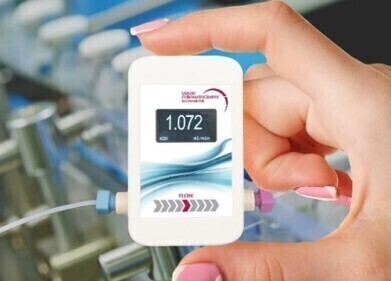HPLC, UHPLC
Can You Be Sure It’s Butter?
Apr 27 2016
Food adulteration is a growth industry — when the regulators get one scare under control another seems to emerges. This is because the drivers behind adulteration are simple — greed and profit, factors present whatever the economic situation or potential impact on your health.
The food industry plays an active role in preventing and catching food adulteration. Gas (GC) and liquid (HPLC) chromatography play a big part in detecting food adulteration as discussed in the article, Streamlining the Use of High Resolution Mass Spectrometry Data to Fingerprint Adulterated Honey using Multivariate Data Analysis to Facilitate Food Product Quality Control.
It is a constant battle though, and doesn’t just involve champagne and caviar — everyday foodstuffs are also targeted. Let’s take a look at how an everyday foodstuff like butter is analysed to help prevent food fraud — and find out a little bit about normal and reverse phase HPLC.
Real butter — a fat topic
After years being told that butter was no good for us — suddenly the nutrition industry changes its tune and in a major study no link has been found between the fats found in butter and heart disease, stroke or diabetes. This is good news for people who like their toasted teacakes dripping with butter. Unfortunately, it is also good for the fraudsters who are looking to make a bigger profit by adulterating our rich, tasty butter.
Butter is defined by the European Commission as a product that has a milk fat content at level of between 80 and 90%, a maximum water content of 16% and less than 2% of non-fat solids. By regulation, the only fat allowed in butter is milk fat — and it is this that the fraudsters manipulate by substituting cheaper plant oils for the milk fat found in butter.
Reversed or normal — what’s the difference
Traditionally, GC is used to confirm the authenticity of products with a high fat content — the technique is good at measuring fatty acid and triacylglycerol (TAG) content. But GC is not always the ideal technique to use when authenticating butter —the variability of fatty acids in milk and the difficulty in analysing TAGs mean that the technique is not the most efficient when authenticating butter.
Luckily, butter contains other components — sterols and tocopherols — that are ideal to use for butter authentication using HPLC. Tocopherols can be analysed using either normal (NP-HPLC) or reverse (RP-HPLC) phase HPLC.
The difference between NP and RP is basically down to the polarity of the mobile and stationary phases and the make-up of the sample.
- NP stationary phase is polar — mobile phase is non-polar
- RP stationary phase is non-polar — mobile phase is polar
Most modern methods use RP — and modern columns are quite capable of handling polar liquids such as the water found in butter. With its shorter analysis times and better repeatability when compared to NP methods — RP methods are now routinely used to check for butter adulterated with cheaper plant oils.
Enjoy your toast.
Image from Wikimedia commons
Digital Edition
Chromatography Today - Buyers' Guide 2022
October 2023
In This Edition Modern & Practical Applications - Accelerating ADC Development with Mass Spectrometry - Implementing High-Resolution Ion Mobility into Peptide Mapping Workflows Chromatogr...
View all digital editions
Events
Jan 20 2025 Amsterdam, Netherlands
Feb 03 2025 Dubai, UAE
Feb 05 2025 Guangzhou, China
Mar 01 2025 Boston, MA, USA
Mar 04 2025 Berlin, Germany



.jpg)








